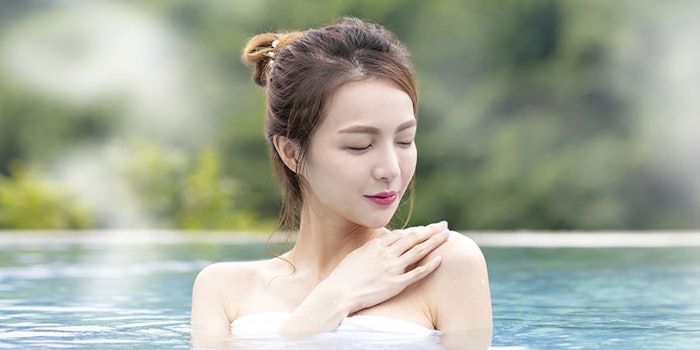
Read this article in its entirety in the September 2020 digital edition. . .
Bathing or washing the body as it is immersed in water may be practiced for personal hygiene, religious ritual or therapeutic purposes. By analogy, the term is also applied to recreational sunbathing, sea bathing and forest bathing. Traditional bathing flourished in Rome, Asia and later in Central Europe but until public opinion began to shift, bathing at home was not popular, apart from saunas and Turkish baths that have culturally stood the test of time.
Beyond achieving cleanliness and reducing body odor, bathing supports the health of the greater community by helping to lower the incidence and spread of disease. The therapeutic use of bathing, known as hydrotherapy, has been used for rehabilitation from injury, to address mental health conditions and to help relaxation. However, the feeling of well-being that bathing creates and the related opportunities for human connections are the focus of the research presented in this article.
Temporal Sensory Deprivation
The touch of warm water on the skin intuitively feels good but research also has shown that the shower is often where thought-provoking insights happen. As fMRI and EEG measurements show, insights are linked to bursts of activity in the right temporal lobe of the brain, a particular area that seems to make connections or associations between different ideas or sensations. The brain “blinks” just before “getting an insight.” There is then a rush of alpha waves in the back of the brain that shuts down activity in the visual cortex—the part of the brain that processes visual and perceptual information. It is similar to closing your eyes to look away from a problem before reaching an epiphany and with that insight, you become momentarily less aware of your environment.
Not only does warm water in the bath or shower elevate mood, but it draws attention inward and provides a temporary sensory restriction; e.g., limited sight, the white noise of the running water and its warmth, etc. This creates a sensation that blends the skin with its surroundings and provides the opportunity for a “brain blink.” With the outside world cut out, ideas are able to bubble up into awareness.1
Heat, Relaxation and Sleep
Bath water in Japan is much hotter than that typically used in Central Europe. In Japan, the preferred temperature is typically well above 40°C, and as professionals and researchers are aware from the medical literature, 47°C is considered bearable. This heat is a prerequisite for complete relaxation, and the Japanese tend to take a 40°C bath almost every day.
The Japanese custom is to thoroughly clean oneself with soap and rinse before entering the tub—so as not to contaminate the bath water. In contrast, home bathing without a prior wash is customary in the West. Until the 19th century, the Japanese did not use soap but rubbed the skin with certain herbs or rice bran, which was also a natural exfoliant.2
In relation, bathing in hot springs is known to facilitate improved sleep by warming the body. Research shows that in healthy young women, a 90 min hot bath brings about positive change in sleep patterns: an increase in sleepiness at bedtime, slower-wave sleep, stage 4 sleep as well as a reduction in the first REM sleep period.3
. . .Read more in the September 2020 digital edition. . .
References
- Yu, C. Why do we get our best ideas in the shower? Headspace Inc. Https://www.headspace.com/blog/2017/07/28/shower-epiphanies/
- Bathing. Wikipedia: The Free Encyclopaedia. Https://en.wikipedia.org/wiki/Bathing
- Horne, J.A. and Reid, A.J. (1985). Night-time sleep EEG changes following body heating in a warm bath. Electroencephalogr Clin Neurophysiol 60(2):154-157. doi:10.1016/0013-4694(85)90022-7











